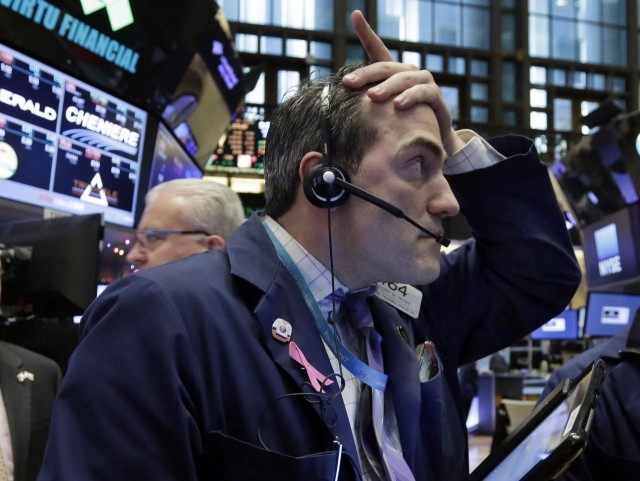Silicon Valley tech stocks that have led world stock markets up since the March 2009 bottom of Great Financial Crisis led markets down on January 15, with the Dow Jones Industrial Average tanking 537 points before recovering to a still nasty 390-point loss.
The tech-heavy NASDAQ Index is off to its worst start in history, down 10.4 percent.
The tech-stock-wipe-out sent Intel plunging 9 percent, Twitter (NYSE:TWTR) dropped 5.58 percent, and Yahoo fell 4 percent. The so called “FANG” was also hit hard, with Facebook (NASDAQ:FB) falling 3.46 percent, Apple (NASDAQ:AAPL) off-2.4 percent, Netflix (NASDAQ:NFLX) down 2.7 percent, and Google (NASDAQ:GOOG) off by 3 percent.
The investor panic that raged in China this summer has spilled over to the United States. In an effort to bail out their insolvent banks and state-owned enterprises, the communist Chinese authorities pushed prices up beginning in early 2013. The effort seemed a success, with prices rising by 150 percent, as the number of individual stock brokerage accounts in China jumped by 1,000 percent. But since June, the prices have fallen 40 percent, despite authorities buying 18 percent of outstanding China shares.
China accumulated $4.3 trillion in foreign exchange reserves by mid-2014, but government efforts to defend the value of the yuan currency and buy distressed stocks has wiped out about $1 trillion over the last year. Given that their export economy needs $2.5 trillion in foreign exchange to support trade, if the economy does not turn around in the next 8 months, China could suffer the world’s largest banking crisis.
Despite the summer crash in Chinese stocks, Silicon Valley tech companies claimed that their future were strong based on continued growth of Chinese consumption.
Apple announced on October 27 that despite the turmoil, the company achieved 99 percent year-over-year revenue growth in China. CEO Tim Cook triumphantly told institutional investors he anticipated the “Greater China” region would rise from 24 percent of the company’s sales to become “Apple’s top market in the world.”
But the fairy tale turned to a nightmare, as Breitbart News reported on January 6. With iPhone 6S and 6S Plus models ballooning on retail shelves in China and Europe, Apple is being forced to slash parts demand by almost a third versus last year.
The extent of Silicon Valley’s damage was made clear on January 15 when Intel shocked wildly optimistic Wall Street analysts with news that the company had flat earnings, and data center chip sales in the fourth quarter ending December 31 climbed by just 5 percent, down from a 12 percent rise in the prior quarter.
With that report Intel, whose chips are purchased by about 80 percent of computer hardware companies, the demand problems that Apple has seem to be consistent with the demand problems in the entire industry.
Over the weekend, JP Morgan cut their GDP growth estimate for the fourth quarter from 1.0 percent 0.1 percent. In mid-day trading in Asia, Chinese stocks plunged by 3.2 percent. Asian, Middle East and European stocks were also hit with big losses.

COMMENTS
Please let us know if you're having issues with commenting.